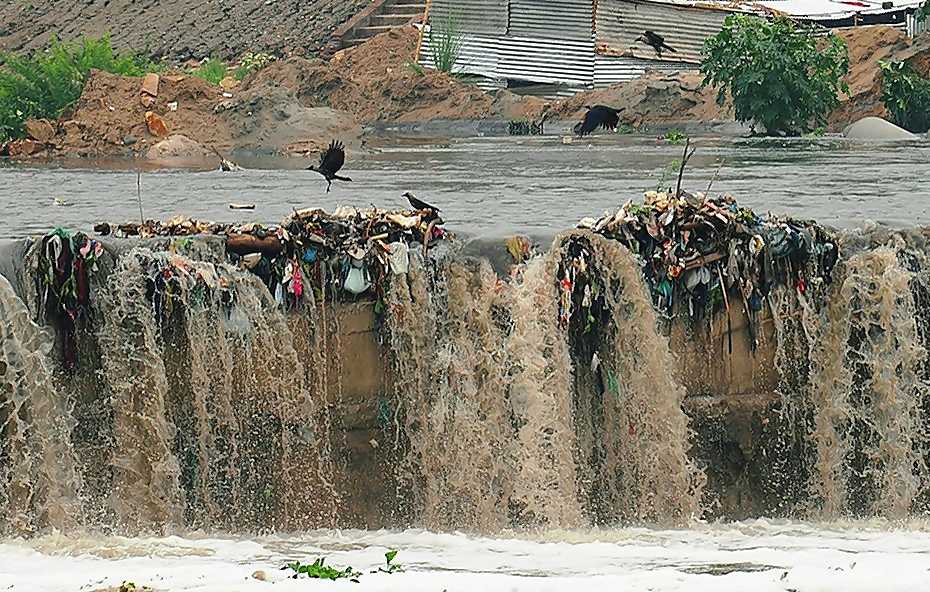Description

Copyright infringement is not intended
Context: The number of polluted stretches in India’s rivers has fallen from 351 in 2018 to 311 in 2022, though the number of most polluted stretches is practically unchanged, according to a report from the Central Pollution Control Board (CPCB)
Details:
- The CPCB network monitors water quality at 4,484 locations across the country.
- Biochemical oxygen demand (BOD) exceeding 3 milligrams per litre (mg/l) is identified as polluted locations.
- Two or more polluted locations identified on a river in a continuous sequence are considered as a “polluted river stretch.
- A BOD less than 3 mg/l means the river stretch is fit for outdoor bathing.
- Further, stretches with BOD exceeding 30 mg/l are considered “Priority 1” (P1), meaning, the most polluted and thus needing the most urgent remediation.
- The success of river-cleaning programmes are measured by the number of stretches moving from 1 to 2, 2 to 3 until those in 5 (requiring the least action) too reduce.
- Priority 2: BOD between 20&30 mg / l
- Priority 3: BOD between 10 & 20mg / l
- Priority 4: BOD between 6-10 mg / l
- Priority 5: BOD between 3& 6 mg / l
- In 2018, when the CPCB published its report (after analysing stretches in 2016 and 2017), there were 45 stretches categorised in P1, 16 in P2, 43 in P3, 72 in P4 and 175 in P5. The latest report counts 46 in P1, 16 in P2, 39 in P3, 65 in P4 and 145 in P5. All of the improvement thus, were in river stretches that required relatively less intervention.
- While Gujarat and Uttar Pradesh had the highest number of “Priority 1” river stretches (6), Maharashtra had the most polluted river stretches of 55, followed by Madhya Pradesh (19), Bihar (18), Kerala (18), Karnataka (17) and Uttar Pradesh (17).
- National Green Tribunal passed orders that the CPCB and the Jal Shakti Ministry monitor river pollution and ensure that it was dealt with. Every State had to ensure that at least one river stretch was “restored” to at least be fit for bathing.
- Under the Central Sector Scheme of Namami Gange, 406 projects, including 176 projects for sewage treatment of 5,270 MLD and a sewer network of 5,214 km, have been sanctioned at a cost of ₹32,898 crore against which sewage treatment capacity of 1,858 MLD has been created so far.
.jpg)
The key water-quality indicators:
- Dissolved oxygen (DO):The DO test measures the amount of oxygen dissolved in the water. Oxygen is essential for both plants and animals, but high levels in water can be harmful to fish and other aquatic organisms.
- Water temperature: Aquatic organisms are dependent on certain temperature ranges for optimal health. Temperature affects many other parameters in water, including dissolved oxygen, types of plants and animals present and the susceptibility of organisms to parasites, pollution and disease.
- pH:A pH test measures the alkalinity or acidity of water. A pH of 7 is neutral, below 7 is acidic and above 7 is basic or alkaline. Acid rain, from auto exhaust or other pollutants, causes a drop in the pH.
- Escherichia coli (E. coli):coli is a fecal coliform bacteria that comes from human and animal waste. The Environmental Protection Agency uses E. coli measurements to determine whether fresh water is safe for recreation. Disease-causing bacteria, viruses and protozoans may be present in water that has elevated levels of E. coli. Levels of E. coli can increase during flooding. E. coli is measured in number of colony forming units.
- Specific conductance:The specific conductance test measures the ability of water to pass an electrical current. Conductivity in water is affected by inorganic dissolved solids such as chloride, sulfate, sodium, calcium and others. High conductance readings also can come from industrial pollution or urban runoff, such as water flowing from streets, buildings and parking lots.
- Nitrates:Nitrogen is a nutrient necessary for growth of all living organisms. The CRWN nitrogen tests measure nitrate (NO3-N). Excessive amounts of nitrates increase algae growth. Algae can rob the water of dissolved oxygen and eventually kill fish and other aquatic life.
- Transparency:Transparency measures how far light can penetrate a body of water. Sunlight provides the energy for photosynthesis and determines the depth at which algae and other plants can grow, defining the ecological make-up of a water body. A change in water clarity may be noticed after heavy rains, as silt and debris can run off, causing the visibility to decrease.

https://epaper.thehindu.com/Home/ArticleView












